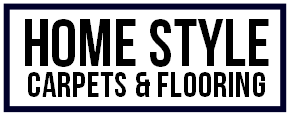How to install carpet tiles
/Carpet tiles (or modular or square carpets) are square shapes cut from larger wall to wall rolls, and are commonly used to create a new floor design. These can present households with a more inexpensive option than a traditional carpet. It is more cost-effective to replace individual carpet tiles, which are also less likely to require professional support. This guide aims to simplify the DIY installation process. It is therefore important that you follow each stage carefully.
Can I install carpet tiles myself?
Whilst it can seem tricky, laying carpet tiles is easier than it sounds. You will require the following tools: chalk, a vacuum cleaner, a fixed-blade utility knife, double-sided tape, a metal ruler, a tape measure, and carpet tile adhesive. You may also wish to consider Tackifier adhesive for larger areas.
How to install carpet tiles on underlay
A suitable underlay firstly needs to be clean and level. There are different underlays which come in different styles, from rubber for carpet tiles to others with acoustic properties.
Before laying your modular tiled floor, carefully stack and air the tiles in piles around the room. They should acclimatise for at least 24 hours before being fitted. Check the sub-floor is sound and solid. Clean your sub-floor of any dust or dirt. Fill any cracks or holes, level uneven patches and dry any dampness with a damp proof membrane.
Pay attention to the ‘pile direction arrows’ on the back of your carpet tiles. These will help you determine if you prefer a more textured look or a chequered pattern effect.
Do you put anything under carpet tiles?
Foam underlayment is a popular choice due to its softness and comfort, also providing reliable acoustic and thermal insulation to reduce noise and trap heat.
How to install carpet tiles
Firstly, always start in the middle of the room in case the walls aren’t straight. Mark a chalk line outward from the centre of the room, loosely placing carpet tiles along it. Then repeat to the sides of the room. The two lines of carpet tiles should be neatly aligned and now resemble a cross. This is to achieve an even finish. Check for uneven gaps at the edges and untidy looking thin gaps or ugly seams by doors. Check the gaps at the edges are equal, which should ideally be no more than half a tile all around the room. Tiles must be snugly fitted so that carpet fibres aren’t trapped.
Your carpet tiles can be sealed in position with adhesive glue or double-sided tape. Before sticking them down make sure to check that the colour has turned from white to transparent. Spray adhesive can also be used but remember that this should either be on the back of the carpet tile or on the floor, but definitely not both, or you may have a problem lifting the tiles again. In larger spaces you may prefer to use a more cost effective liquid tackifier (applied with a foam roller).
Only cut around the edges of the room once the carpet tiles have all been laid and you are satisfied with the layout. For the tidiest finish, use a profile gauge when trimming neat edges. Be careful with your cutting knife blades, and remember to change them after every 5 to 6 cuts.
How to install carpet tiles over carpet
Carpet tiles can be fitted on both thin and thick pile materials. In each instance, make sure you comprehensively clean the established carpet area beforehand. When using a liquid or steam cleaner, the carpet should be left to totally dry. It is usually fine to install the carpet tiles straight on top of a thin pile carpet, but with thick pile carpet it is strongly recommended you place plywood underlay boards on the floor or else risk leaving a potentially uneven surface.
Carpet tile longevity
New carpet tiles are designed to last for many years but certain measures should be taken to ensure they remain in the best condition, primarily daily vacuuming and periodical deep cleaning. Additionally, they may suffer from curling caused by carpet fibre tension, or not align as they should. During winter, they may arrive cold from warehouse or depot storage and if laid straight, there is the risk of expansion in a centrally heated room. If this happens it may be necessary to contact the manufacturer.
If you are based in the Chester, Oswestry, Wrexham or wider North Wales area and require flooring services, carpets, vinyl, wood or laminate, then contact us to get professional advice and an estimate from a member of the team.

